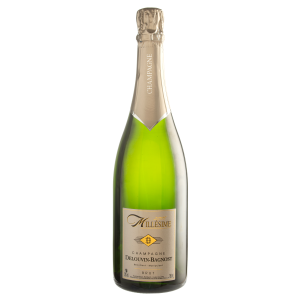In our third post about our “Mystery of Meunier” spring theme, we look at the ageing potential of this grape variety, putting one exceptional example of an aged Meunier under the spot light.
Prior to our research into this incredible grape variety, we had been led to believe that Pinot Meunier is not suitable for ageing over any considerable length of time. Yes, it is often used in blends, which can be left to age over a fairly substantial period, but not in any significant majority. The dominant grape varieties seem to always be either Pinot Noir or Chardonnay.
Perhaps this is because, as we discovered last time, Meunier can be susceptible to rot given the proximity of the grapes on the bunch, which, for those who do not practice selective picking, may affect the overall quality of the wine. Or maybe it is because the Meunier grape actually reaches maturity more quickly than other varieties?
We can’t be sure exactly what the individual thoughts are in this regard, but as they say, the proof really is in the pudding, or in this case, champagne tasting.
And so we move to the second of our spring selection, taken from Délouvin-Bagnost, a wonderful little vineyard in the village of Vandieres in the Vallée de la Marne. We have wanted to work with them for some time as they have three exceptional examples of Pinot Meunier.
During one of our first visits to this quaint house, we tasted the Brut Tradition, which is 79% Meunier, 15% Chardonnay, 15% Pinot Noir, closely followed by the 1999 vintage of the same blend. Wow. Never have we tasted such a rich, powerful champagne, which is still really easy drinking. And so when we were presented with their 2005 vintage, we were not surprised to find the same characteristics, albeit to a slightly lesser extent given its relative youth compared to the 1999.
The great thing about vineyards who keep the same blends across multiple cuvées is that you really get to see the evolution of flavours as the wine ages, which with Pinot Meunier is important given the lack of vintage examples available. The Tradition has the roundness, the depth and a touch of creaminess, but this intensifies with age. Unlike an aged Pinot Noir, which over time adopts more of a fortified wine aroma and maybe even taste and Chardonnay, which becomes buttery and biscuity, but still with a slight acidity, Meunier seems to retain its smoothness, making it a wine to be enjoyed very much on its own, as well as with food if one chooses.
So despite the fact that Pinot Meunier matures more quickly than other grape varieties, it can go on to develop further still, bringing out more of its wonderful characteristics. This has been fully understood and respected by Délouvin-Bagnost, who gives the vintage time to “find itself” and truly express its character. What they have also realised is that in leaving their Pinot Meunier to age for longer, they do not need to add as much extra sugar when it comes to disgorging, as the combination of the three grape varieties, as well as the maturity, combine to create a wonderful scent of syrup and rich, full-bodied, fruity flavours with no overpowering acidity and an incredible length. If you wanted to pair this with something, it is powerful enough to pair with blue cheese or even spicy beef dishes.
During our Meunier adventures, you may remember that we said we were surprised by the more acidic and minerally varieties that we discovered. Whilst these vineyards had not yet released vintage versions of their Meunier champagnes, we couldn’t help but think ageing would soften them and bring back some of the roundness we had been expecting, thereby making them slightly easier on the palate.
It is no surprise really that this little vineyard should excel in their work – the family roots can be traced back to the end of the 17th Century when their main work was as barrel makers. Georges Délouvin began cultivating grapes as early as the 1930s, but sold them on to the big merchant houses like many others pre-wartime. Eventually he dabbled in making his own champagnes, before passing the baton to his son Robert, who married in the late 1940s to a fellow winemakers daughter with the name “Bagnost”. They had a son called Christian, who in turn had a son called Jérome and it is he who today creates the masterpieces under the watchful, yet respectful eye of his father.
With a modest 4 cuvées in their range, we can’t help but feel there is more to come from this house, which has significantly expanded over the years and now has the potential to produce around 100,000 bottles per year compared to the 10,000 of recent times.
More information on the champagne can be found here.
If you have ever tasted a vintage Pinot Meunier, we would love to hear your thoughts so please feel free to comment below.
Until next time, happy drinking.
Karen
Chief Bubble Taster @ The Real Champagne Company


